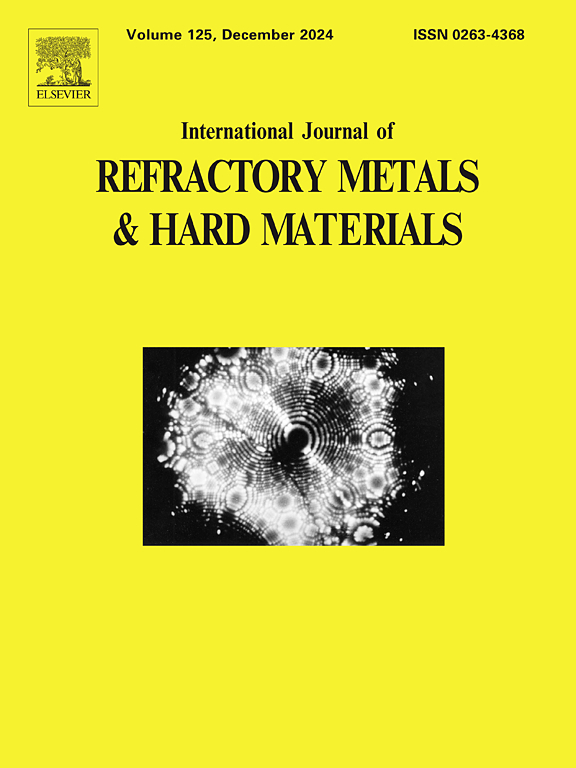Microstructure and wear resistance of zirconium manufactured by laser directed energy deposition
IF 4.2
2区 材料科学
Q2 MATERIALS SCIENCE, MULTIDISCIPLINARY
International Journal of Refractory Metals & Hard Materials
Pub Date : 2025-04-11
DOI:10.1016/j.ijrmhm.2025.107168
引用次数: 0
Abstract
In this study, a zirconium sheet was fabricated utilizing laser directed energy deposition (L-DED) technique along with its microstructure, hardness, and wear resistance to be compared with a conventionally rolled and annealed (RA) zirconium sheet. The RA specimen exhibits equiaxed grains with uniform size and a bimodal basal texture, along with a few dispersed ZrFe2 particles. In contrast, the L-DED specimen is featured by parallel or interlaced laths (with dense entangled dislocations) and many Zr3Fe precipitates along the lath boundaries, exhibiting a nearly random texture. Tests reveal that the L-DED specimen shows nearly two times hardness and a ∼ 30 % reduced wear rate compared to the RA specimen. Such improvement can be jointly attributed to the enhanced second-phase, dislocation and grain refinement hardening/strengthening. This study verifies the feasibility of producing high performance zirconium materials through L-DED, which could provide some definite insight into further application of additive manufacturing to zirconium production.
激光定向能沉积法制备锆的显微组织和耐磨性
在本研究中,利用激光定向能沉积(L-DED)技术制备了一种锆片,并将其微观结构、硬度和耐磨性与传统轧制退火(RA)锆片进行了比较。RA试样呈现大小均匀的等轴晶粒和双峰基织构,并伴有少量分散的ZrFe2颗粒。相比之下,L-DED样品的特征是平行或交错的板条(具有密集的纠缠位错),并且沿板条边界有许多Zr3Fe沉淀,表现出几乎随机的纹理。测试表明,与RA样品相比,L-DED样品的硬度几乎是RA样品的两倍,磨损率降低了30%。这种改善可以共同归因于第二相、位错和晶粒细化硬化/强化的增强。本研究验证了通过L-DED制备高性能锆材料的可行性,为增材制造在锆生产中的进一步应用提供了一定的思路。
本文章由计算机程序翻译,如有差异,请以英文原文为准。
求助全文
约1分钟内获得全文
求助全文
来源期刊
CiteScore
7.00
自引率
13.90%
发文量
236
审稿时长
35 days
期刊介绍:
The International Journal of Refractory Metals and Hard Materials (IJRMHM) publishes original research articles concerned with all aspects of refractory metals and hard materials. Refractory metals are defined as metals with melting points higher than 1800 °C. These are tungsten, molybdenum, chromium, tantalum, niobium, hafnium, and rhenium, as well as many compounds and alloys based thereupon. Hard materials that are included in the scope of this journal are defined as materials with hardness values higher than 1000 kg/mm2, primarily intended for applications as manufacturing tools or wear resistant components in mechanical systems. Thus they encompass carbides, nitrides and borides of metals, and related compounds. A special focus of this journal is put on the family of hardmetals, which is also known as cemented tungsten carbide, and cermets which are based on titanium carbide and carbonitrides with or without a metal binder. Ceramics and superhard materials including diamond and cubic boron nitride may also be accepted provided the subject material is presented as hard materials as defined above.

 求助内容:
求助内容: 应助结果提醒方式:
应助结果提醒方式:


